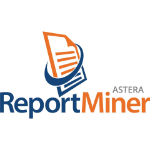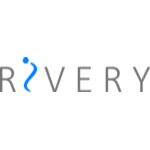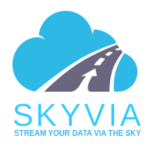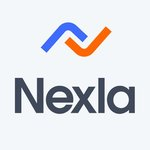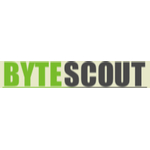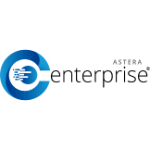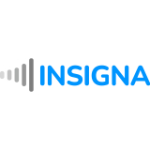TechnologyCounter provides genuine, unbiased real user reviews to help buyers make informed decisions. We may earn a referral fee when you purchase through our links, at no extra cost to you.
List of 15 Best ETL Software
Showing 1 - 15 of 22 productsReportMiner is a data extraction and conversion software for all your business needs. With its advanced technology and innovative features, ReportMiner simplifies the process of converting unstructured data into usable and actionable insights. Say go...Read ReportMiner Reviews
Talend Big Data is a and innovative software designed to help businesses unlock the full potential of their data. With its user-friendly interface features, Talend Big Data makes it possible to easily integrate, cleanse, and analyze large volumes of...Read Talend Big Data Reviews
TIBCO Jaspersoft is a and innovative business intelligence platform that provides organizations with the tools to visualize and analyze data in order to make informed decisions and drive growth. With its user-friendly interface and robust features, J...Read TIBCO Jaspersoft Reviews
Improvado is a solution for marketers and data analysts looking to streamline their data management and reporting. With its user-friendly interface is a data integration capabilities, Improvado allows businesses to make data-driven decisions with eas...Read Improvado Reviews
Rivery is a data integration platform that simplifies the process of moving, transforming and delivering data to businesses of all sizes. Its intuitive interface automation capabilities make it a top choice among companies seeking to streamline their...Read Rivery Reviews
Panoply is a software that is changing the way businesses manage their data. With its user-friendly interface features, Panoply streamlines data analysis and simplifies decision-making. Designed to cater to a wide range of industries, Panoply is a ga...Read Panoply Reviews
Skyvia is a is a cloud-based data integration and management platform. Designed to seamlessly connect, transform, and synchronize data across various applications and databases, Skyvia is a solution for streamlining your data processes and maximizing...Read Skyvia Reviews
Nexla is a groundbreaking software designed to streamline your data integration processes and revolutionize your business operations. With its advanced technology interface, Nexla simplifies data management, allowing you to focus on driving growth an...Read Nexla Reviews
Upsolver is a data engineering platform designed to streamline and simplify your data lakes and real-time streaming pipelines. With its intuitive interface capabilities, Upsolver empowers businesses to effortlessly process and analyze massive amounts...Read Upsolver Reviews
Flatirons Fuse is a solution for all your data management needs. With its intuitive interface features, Fuse focuses on streamlining your workflow and empowering your team to make the most of your data. Get ready to revolutionize your data management...Read Flatirons Fuse Reviews
Cloud API is a versatile and user-friendly software that simplifies and streamlines the process of integrating cloud-based services into applications. With efficient and secure communication between different systems, Cloud API revolutionizes the way...Read Cloud API Reviews
Astera Centerprise is a data integration and automation software for businesses of all sizes. With its intuitive interface and robust capabilities, Centerprise streamlines data processes and drives efficiency. Its top-notch features make it a top cho...Read Astera Centerprise Reviews
Adverity is a software that simplifies and streamlines the way businesses handle data. With Adverity, you can say goodbye to complicated data management processes and hello to efficient and effective analysis. Be prepared to take your data game to th...Read Adverity Reviews
Insigna the ultimate software solution for all your organizational needs. Developed by a team of experts, Insigna is designed to streamline your processes, increase efficiency and boost productivity. With its user-friendly interface features, Insigna...Read Insigna Reviews
Data Bridge is a software designed to streamline and transform the way data is managed and utilized in business operations. With its advanced features interface, Data Bridge empowers companies to make informed decisions and drive growth through effic...Read Data Bridge Reviews
- What Is ETL Software?
- Top Reasons Why Businesses Need ETL Software?
- What Are the Top Key Features of ETL Software?
- What Are the Top Benefits of ETL Software?
- What Are the Steps to Choose the Right ETL Software?
- What Are the Types of ETL Software for Different Industries?
- What Are the Technology Trends for Best ETL Software?
- What Are the Deployment Options for ETL Software?
What Is ETL Software?
The acronym ETL software refers to software that performs the functions of extracting, transforming, and loading data. The data integration tool is utilized for the purpose of transferring data from diverse sources, including databases, flat files, XML, and other formats, into a data warehouse or business intelligence system.
The aforementioned procedure streamlines the extraction of data from diverse sources, as well as the subsequent transformation and standardization of this data, culminating in its loading into the designated system. The Extract step involves the retrieval of data from diverse systems or formats.
The Transform phase involves the process of cleansing, standardizing, and formatting the data in preparation for its integration into the designated system. The Load step involves the process of transferring the modified data into the designated destination system, enabling users to perform analysis on the data.
Top ETL tools are an invaluable asset for enterprises that necessitate the management of substantial volumes of data originating from diverse sources. The utilization of the best ETL tools facilitates the seamless transfer and integration of data, hence enhancing the efficiency and accuracy of data analysis.
This facilitates enterprises in making well-informed decisions and capitalizing on opportunities.
Top Reasons Why Businesses Need ETL Software?
1. The top ETL software facilitates the expeditious development of intricate data pipelines connecting various sources and target systems, encompassing databases, NoSQL, and other platforms.
2. Automate laborious and intricate data transformation procedures, hence mitigating the need for manual coding and data engineering efforts.
3. One should employ data profiling tools to effectively monitor the performance of data sets and pipelines.
4. One crucial aspect is to monitor the lineage of data and guarantee the secure and dependable storage of data.
5. Develop a dynamic schema-on-read platform that facilitates efficient data exploration and analysis through interactive functionalities.
6. The task involves the creation of code for databases, computer languages, and communications systems.
7. Ensure data consistency across diverse platforms to facilitate streamlined reporting and analytics processes.
8. The best ETL software is utilized to execute transformations and validations on data in order to guarantee data quality.
9. The ETL system involves the automated extraction of data from several sources, including numerous flat files, JSON documents, XML documents, and web APIs.
10. The best ETL tools enhance the efficiency of data integration through the utilization of incremental loading and data hashing techniques.
11. The utilization of machine learning algorithms enables the compilation of robust data-driven insights for the purpose of predictive analytics.
12. The best ETL software strategy for mitigating or eliminating the delay in data transmission within pipelines is through the implementation of in-memory processing techniques. The scalability and flexibility of cloud computing enable efficient management of large-scale data operations.
14. Facilitate collective collaboration among team members by providing a shared and authoritative source of information.
15. The top ETL tools approach to enhance the capabilities of self-service analysis and reporting is to integrate with business intelligence (BI) tools. By doing so, users can gain access to a wider range of analytical functionalities and reporting capabilities, thereby enabling them to extract more valuable insights from their data.
What Are the Top Key Features of ETL Software?
The top key features of ETL software include:
1. Extraction: The ETL system possesses the capability to retrieve data from several sources, including but not limited to databases, flat files, XML files, spreadsheets, and emails.
2. Transformation: ETL (Extract, Transform, Load) software possesses the capability to convert data from its initial state into a format and structure that aligns with the requirements of the intended system or application. This encompasses several tasks such as data cleansing, data mapping, data aggregation, and code rewriting.
3. Loading: The best ETL tools has the capability to efficiently transfer the processed data into the designated target system or application.
4. Performance Tuning: The top ETL software is utilized for optimizing the efficiency of data processing tasks, hence ensuring the achievement of optimal outcomes.
5. Scheduling: The ETL software possesses the capability to schedule the execution of data processing tasks and effectively monitor the outcomes of these tasks.
6. Data Profiling: The top ETL tools possesses the capability to do data profiling across many sources, enabling the identification of trends and anomalies within the data.
7. Security: The ETL system possesses the capability to enhance security measures by effectively safeguarding against the inadvertent disclosure of sensitive data and thwarting unauthorized access attempts.
8. Reporting: The top ETL tools has the capability to provide reports, such as audit logs, which display the outcomes of transformations, including any inconsistencies that may arise.
What Are the Top Benefits of ETL Software?
1. Automates data transfer: ETL (Extract, Transform, Load) software facilitates the automated transfer of data from several databases or sources, consolidating them into a singular and cohesive destination. Popular ETL tools feature obviates the necessity of manually inputting data, resulting in time savings and a decrease in human errors.
2. Integration & Aggregation: The process of the ETL system facilitates the integration of data derived from diverse sources, while concurrently applying formatting and filtering operations to prepare the data for loading into a data warehouse. The process of aggregating and structuring source data, which is originally kept in several systems and places, can be accomplished by consolidating and organizing it into a unified data warehouse.
3. Data Mapping: The best ETL tools facilitates the process of mapping data from a source system to a target system. This process involves the conversion and correlation of data from one format to another.
4. Data Validation: Popular ETL tools processes play a vital role in the realm of data management by facilitating the cleansing and validation of data. The process discovers and eliminates data discrepancies, null-values, and dirty data from the source system in order to mitigate the occurrence of subsequent problems.
5. Enables Data Warehouse: ETL tools play a crucial role in the realm of data warehousing as they facilitate the extraction of data from various sources, subsequently transforming it, and ultimately putting it into the data warehouse in alignment with the prescribed business rules and needs.
6. Scalability & Performance: The top ETL software offers enhanced scalability and performance capabilities while handling substantial information.
7. Security & Accessibility: Extract, Transform, and Load (ETL) processes play a crucial role in safeguarding the security and facilitating the accessibility of data. The system establishes stringent protocols for data access, oversees user authorization, and implements encryption measures to safeguard sensitive data.
8. Auditing & Monitoring: The best ETL tools facilitate the implementation of data auditing and monitoring mechanisms, which allow for the real-time tracking of all data processes. This feature assists the user in monitoring and overseeing the precision and caliber of all the collected data.
What Are the Steps to Choose the Right ETL Software?
1. Identify and evaluate the needs of your data pipelines – The initial stage in the selection process of an Extract, Transform, Load (ETL) software involves the identification and assessment of the requirements pertaining to the data pipelines. When evaluating the intricacy of the data pipeline, the magnitude of the datasets, and the necessary scalability for accommodating bigger quantities, several factors need to be taken into account.
2. Evaluate scalability – The scalability of the ETL software must be assessed in relation to the data's size and expansion. This entails ensuring that the program possesses the capability to effectively manage intricate transformations and substantial datasets.
3. Compare software features – Conduct a comparative analysis of several software options in order to ascertain the most suitable choice based on individual requirements and preferences. It is important to consider not just the technical specs, but also factors such as cost, usability, simplicity of integration, and customer support.
4. Research tech support – Additionally, it is imperative to conduct thorough research on the technical support services provided for the product. It is imperative to ensure that the product possesses a dependable customer service infrastructure in order to offer appropriate support when required.
5. Test the solution – Prior to making a selection, it is advisable to do a comprehensive evaluation of the top ETL software tools in order to ascertain its alignment with your anticipated outcomes. This will aid in the evaluation of necessary modifications prior to system implementation.
6. Implement the software – Ultimately, execute the ETL software solution after achieving a satisfactory level of contentment with its outcomes.
What Are the Types of ETL Software for Different Industries?
There exists a diverse range of ETL software solutions tailored to specific industries, contingent upon the unique applications and operational needs of enterprises.
1. Data Ingestion: The aforementioned software solutions are employed for the purpose of extracting data from various sources and subsequently integrating it into a cohesive system. Data ingestion is a widely utilized process in various domains, with notable applications such as Extract, Transform, and Load (ETL) and Extract, Load, and Transform (ELT). Several data ingestion software options include StreamSets, Talend, and AWS Glue.
2. Data Migration: The selection of appropriate data migration software holds significant importance for enterprises undergoing a shift from one system to another. Prominent software options utilized for data migration encompass Informatica, Oracle Data Integrator, and IBM Infosphere DataStage.
3. Data Warehousing: Data warehousing is an information technology that facilitates the process of decision-making and analysis by providing access to the data held within a database. The data warehouse is responsible for the storage of data derived from various sources, including operational systems, external sources, and the internet. Prominent software solutions encompass Oracle Data Integrator, Microsoft SQL Server, and IBM Netezza.
4. Business Intelligence: Business intelligence (BI) software solutions are employed for the purpose of analyzing data obtained from operational systems as well as external sources. They are employed to enhance and refine business processes for greater optimization. Two widely used software solutions in this domain include Microsoft Power BI and Tableau.
5. Datamarts: Datamarts are specifically intended to facilitate operational reporting and enable comprehensive data analysis. These tools assist in the structure and optimization of data within a database, facilitating efficient assessment and analysis processes. Two examples of datamart software solutions are Oracle Warehouse Builder and Cognos Transformer.
What Are the Technology Trends for Best ETL Software?
The current technology advancements in the realm of ETL software are characterized by a growing emphasis on automation and the enhancement of data integration speed and efficiency.
Contemporary ETL software tools commonly incorporates machine learning and predictive analytics to streamline data integration procedures and enhance the efficiency of designing data integration tasks.
Furthermore, the proliferation of cloud-based technologies is facilitating the deployment and utilization of the best cloud etl tools, hence enhancing its accessibility and user-friendliness.
The prominence of user experience in the development of Popular ETL tools has increased, as developers prioritize the creation of software that is both intuitive and easily learnable, while also ensuring a significant level of flexibility.
The tremendous advancements in hardware technology are also driving the development of the best ETL software capable of managing the escalating data volumes. In recent times, there has been a notable surge in the popularity of open source ETL frameworks, like Apache Airflow and Apache Livy.
These frameworks have gained traction due to their ability to facilitate the development and customization of ETL software tools that cater to specific needs and demands.
What Are the Deployment Options for ETL Software?
The available deployment choices for the best ETL software are contingent upon the particular software package, encompassing cloud-based deployment, on-premises deployment, and hybrid deployment, as a general rule.
Cloud-based deployment involves the hosting of software in either a public or private cloud environment. This feature enables users to conveniently access the best cloud etl tools and data remotely, as long as they have an internet connection.
The process of on-premises deployment entails the installation and execution of the software package directly on the user's hardware infrastructure. This approach necessitates additional configuration and upkeep, yet offers enhanced authority and adaptability over the surroundings.
Hybrid deployment refers to the utilization of a combination of cloud-based and on-premises deployments. For instance, specific types of data and procedures can be effectively controlled within on-premises infrastructure, while alternative data can be efficiently handled using cloud-based systems.
This feature enables users to integrate the advantages of both deployment modes.
